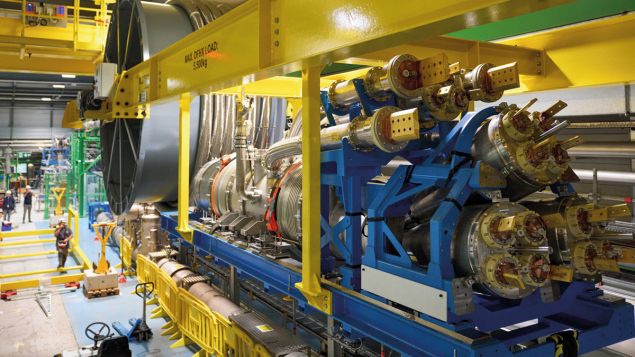
During its September session, the CERN Council was presented with a revised schedule for Long Shutdown 3 (LS3) of the LHC and its injector complex. For the LHC, LS3 is now scheduled to begin at the start of July 2026, seven and a half months later than planned. The overall length of the shutdown will increase by around four months. Combined, these measures will shift the start of the High-Luminosity LHC (HL-LHC) by approximately one year, to June 2030. The extensive programme of work for the injectors will begin in September 2026, with a gradual restart of operations scheduled to take place in 2028.
“The decision to shift the start of the HL-LHC by approximately one year and increase the length of the shutdown reflects a consensus supported by our scientific committees,” explains Mike Lamont, CERN director for accelerators and technology. “The delayed start of LS3 is primarily due to significant challenges encountered during the Phase II upgrades of the ATLAS and CMS experiments, which have led to the erosion of contingency time and introduced considerable schedule risks. The challenges faced by the experiment teams included COVID-19 and the impact of the Russian invasion of Ukraine.”
LS3 represents a pivotal phase in enhancing CERN’s capabilities. During the shutdown, ATLAS and CMS will replace many of their detectors and a large part of their electronics. Schedule contingencies have been insufficient for the new inner tracker for ATLAS, and for the HGCAL and new tracker for CMS. The delayed start of LS3 will allow the collaborations more time to develop and build these highly sophisticated detectors and systems.
On the machine side, a key activity during LS3 is the drilling of 28 vertical cores to link the new HL-LHC technical galleries to the LHC tunnel. Initially expected to take six months, this timeframe was reduced to two months in 2021 to optimise the schedule. However, challenges encountered during the tendering process and in subsequent consultations with specialists necessitated a return to the original six-month timeline for core excavation.
In addition to high-luminosity enhancements, LS3 will involve a major programme of work across the accelerator complex. This includes the North Area consolidation project and the transformation of the ECN3 cavern into a high-intensity fixed-target facility; the dismantling of the CNGS target to make way for the next phase of wakefield-acceleration research at AWAKE; improvements to ISOLDE to boost the facility’s nuclear-studies potential; and extensive maintenance and consolidation across all machines and facilities to ensure operational safety, longevity and availability.
“All these activities are essential to ensuring the medium-term future of the laboratory and allowing full exploitation of its remarkable potential in the coming decades,” says Lamont.








